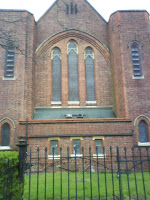This task was compulsory for media, our teachers gave us a tutorial, and it enabled us to get more familiar with the equipment, (how to achieve different camera angles and shots). We learnt how to use the Imac computers for editing. Now we are experienced with the equipment, it is going to be easier for my group, to film and edit our 2 minute thriller opening. Also when we finish our 2 minute thriller the exam board can compare the preliminary exercise with the film, this is going to show them how much we have learnt about the film making process and editing, and how far we have come from the exercise.
Analysis of my Preliminary exercise
We used simple basic camera shots. There was a medium shot in the beginning, at the end of the medium shot, Paul accidentally tilted the camera, we tired to cut it out but then the scene was to short to load, so we had to keep it. The scene then dissolves onto a medium shot of Sir walking into the room, as he gets nearer the camera wobbles. It dissolves onto another medium shot of sir sitting down, then pans to the side. When he walks to the front of the classroom his whole body is cut out you can only see his arm. There is a close up shot of me crying, then dissolves onto me looking out the window. You can see half of my head and the field. We found it difficult to shoot, however at the end we got a hold of it. I am sure our final film will have no camera problems.
We should have added music because we cut many things out and the dialogue sounds unusual.
We should have added music because we cut many things out and the dialogue sounds unusual.












